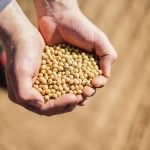Maybe it takes a Wal-Mart to open our eyes to the fact that it’s what we do that counts, not what we say. Let’s learn the lesson.
The headline on the New York Times blog carried exactly the message that the board of directors at Wal-Mart had been striving for. “Wal-Mart getting harder to hate,” said the Feb. 23 posting, which was then picked up by blogs, newspapers and magazines across North America and around the world.
The message was simple and it was measured. No one claimed that Wal-Mart had changed every negative. No one said it had become America’s best corporate employer instead of only it’s biggest. No one said it had stopped using aggressive marketing strategies to put smaller chains and independents out of business.
Read Also

Country Guide November editorial: The now, the next and the numbers
I must admit that when I was younger numbers mystified and frustrated me. In fact, my typically jovial grade six…
Yet the headline does mark a huge step forward for a company that has been among the most disrespected on the continent.
Wal-Mart’s problem may seem exactly the opposite of agriculture’s. Farmers seem liked, Wal-Mart doesn’t. And on the flip side, consumers know a lot about Wal-Mart, while they know precious little about agriculture.
We have to question that. What we think about a group is directly influenced by how we regard it, not just the facts we know. For proof, just look at how worried we are about consumer apathy towards the farm.
It doesn’t take much to form an opinion. It takes much more to change one.
How did Wal-Mart cross the divide? Importantly, they did it with food. Wal-Mart charged into the local food trend. Now, magazine after magazine has stories on how Wal-Mart is a better source of local, nutritious food than most health-food stores, including Whole Foods. But it isn’t those studies or those media reports that are changing minds. It’s the food on the shelves that gives consumers what they are asking for.
The message isn’t that Canada’s farmers should all move within commuting distance of a large city. The message is that action counts more than words.
Farm groups, ag businesses and coalitions of every size and sort across Canada are busy telling consumers what they should think about Canada’s food supply and the people who produce it. It’s a great message, but it’s the same message that Wal-Mart touted for years (higher quality at a lower price) while its public rating plummeted.
We’ve said it here before and we’ll say it again. If agriculture wants to score points, let’s get consumers to listen by helping achieve goals that they think are important. Let’s set our coalitions the task of ending malnutrition on Canada’s reserves. Let’s start lunch programs for schools in vulnerable downtown neighbourhoods. Let’s save the environment with a national farm program to rescue polar bears.
Farmers do produce incredible food, incredibly cheaply, and it is right that we want Canadians to realize this. First, though, we need to make them our friends.
Are we getting this right? Let me know. I’m at 519 674-1449, or you can email me at [email protected].














